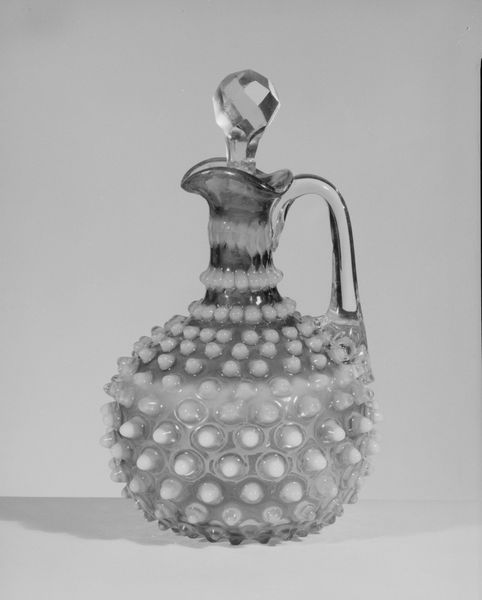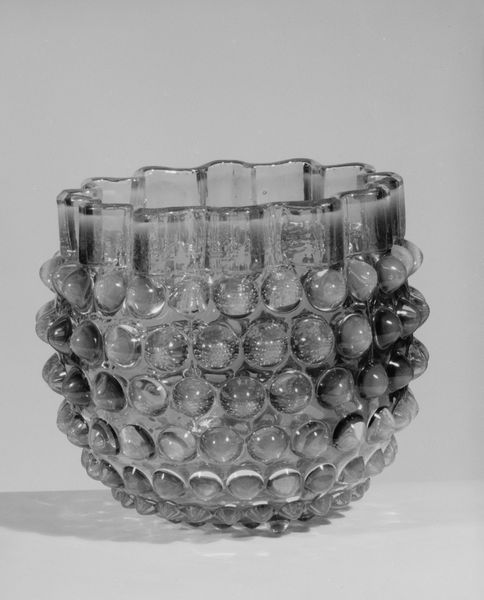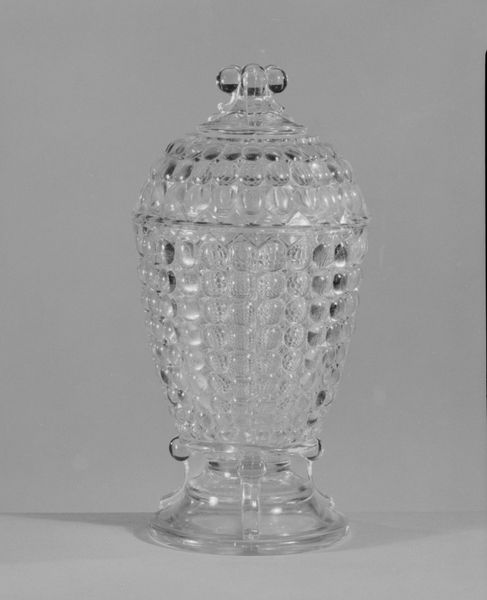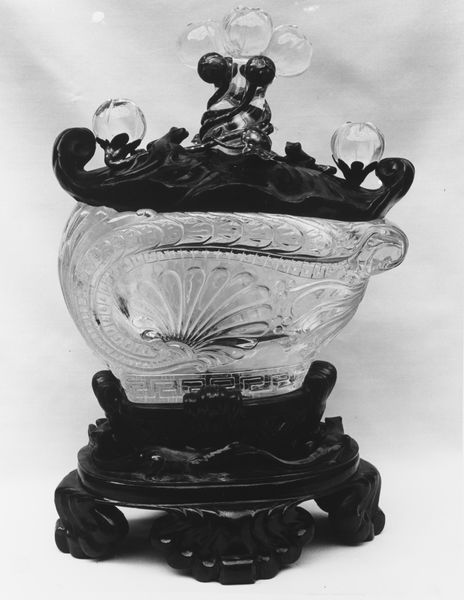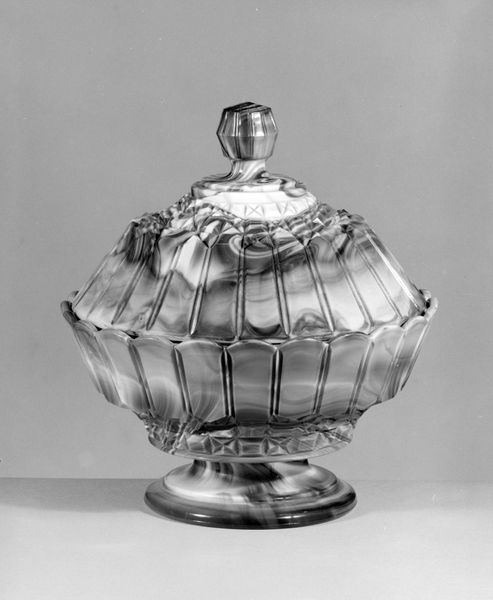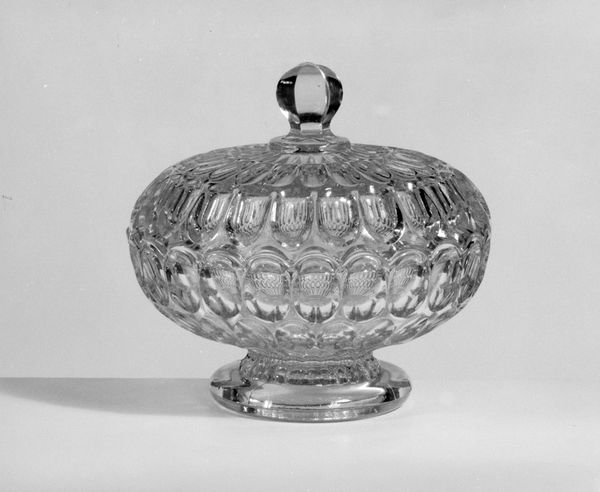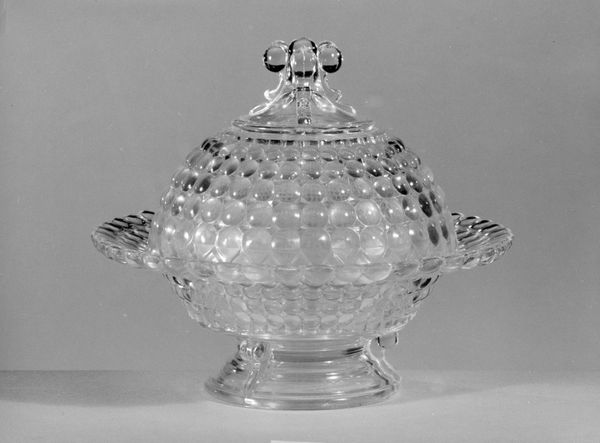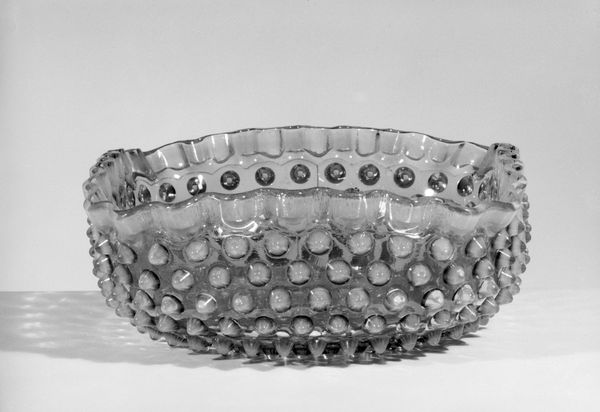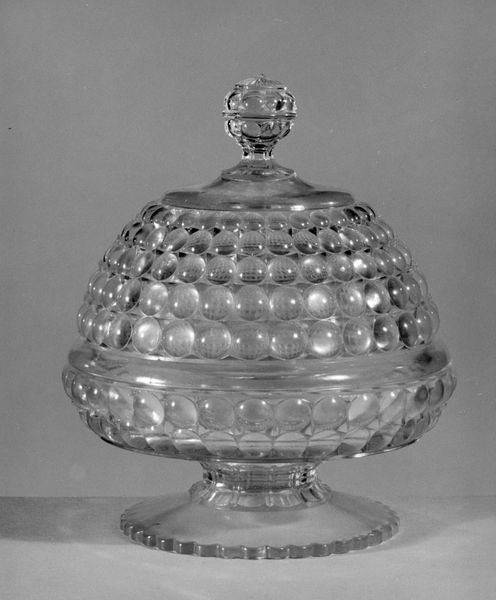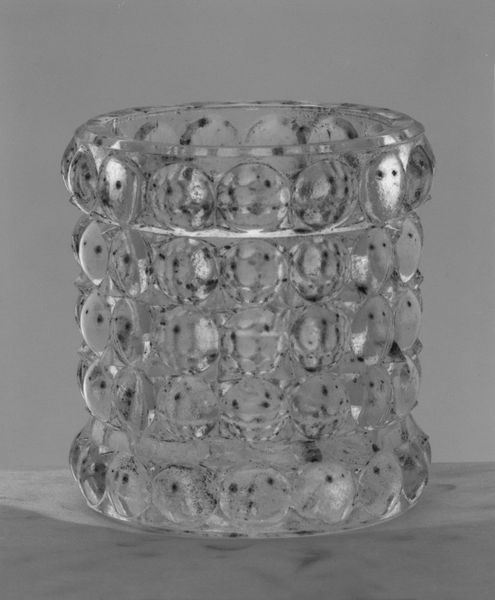
glass, sculpture
#
glass
#
sculpture
#
decorative-art
Dimensions: H. 5 3/4 in. (14.6 cm)
Copyright: Public Domain
This covered sugar bowl was made by Hobbs, Brockunier and Company, sometime between 1863 and 1891. It is made from pressed glass, a technique that was gaining popularity during this time, as manufacturers looked for ways to produce elaborate designs in a more efficient manner. The hobnail pattern is achieved by pressing molten glass into a mold with raised nodes, creating the distinctive textured surface. Notice how the uniform pattern and clear glass contrast with the tactile quality of the hobnails, giving it an almost playful appearance. Mass production techniques such as this, allowed for the creation of affordable luxury items for the middle class, but also raised questions about the value of handmade versus manufactured goods. The bowl blurs the lines between art, craft, and industry, reflecting the changing landscape of production during the late 19th century. Understanding its materials and the processes by which it was made, provide insight into the complex relationship between aesthetics, labor, and consumption during the Industrial Revolution.
Comments
No comments
Be the first to comment and join the conversation on the ultimate creative platform.
